the issue with Black history month
Shattls: Shattered but not broken are you a hipster? take our quiz to FIND OUT

the issue with Black history month
Shattls: Shattered but not broken are you a hipster? take our quiz to FIND OUT
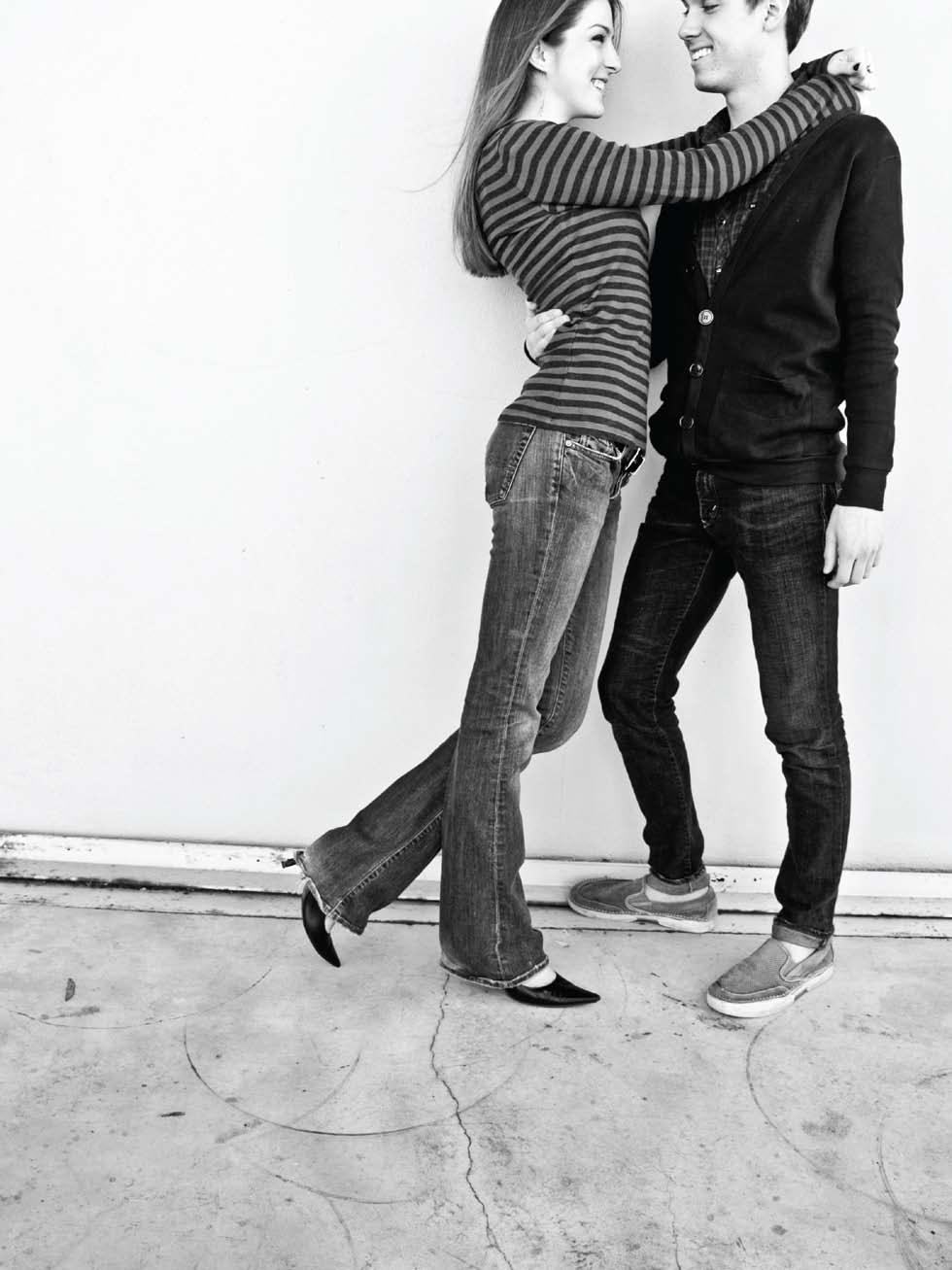











4: Contributors, Inbox
Letter from the Editor 5:
6: Calendar
7: Save and Splurge: How to spend spring break in Panama City, Fla., whether you’ve got a little or a lot
8: 9: 10: 12: 14: 15: 16:
Four Your Consideration: The four biggest cultural events happening in February and March
Local Music: Aleks Kapustynska profiles local band This Machine is Me
At the movies with Mr. Showtime: William Renken on the guys who make love stories possible Caught on Campus
Man of the Moment: Need a ride? Peter Schaeffing’s new Web site can help
Woman on Top: How Caitlin McLaren is changing the world a few blocks from campus
Soapbox: Who should pay for dinner? Three G&B staffers clash over the picking up the bill
The Issue with Black History Month: Features Editor Tas Anjarwalla asks if the way we celebrate Black History Month really helps us understand its significance
Love in Real Life: Caroline DeSanctis styles
four real-life couples in the hottest trends spring has to offer
18: 22: 24: 30: 34:
The Death of Dating: Caitlin Bradley and Jen Howell team up to find out how and why modern communication has almost killed college courtship
Sex and the College Student: Liz Segrist examines the role sex plays in our lives on campus and off
Aly Shattls: Shattered, but not Broken: Michael Aguilar profiles the soccer player’s determination to get back on the field after suffering an injury that would keep most athletes on the bench
38 42
Store Wars: Headliners and New Brookland Tavern go head to head for the title of best venue
40 45 44 46
DIY: How to Break Up Lauren Dolan’s step-bystep guide to help you break up gracefully
Are You a Hipster? Take our quiz to find out
Q&A with a Professor: Kwame Dawes explains his love of literature and how reggae can change your life
Spotlight on Anthropology: It isn’t about living in the woods. It’s all about people
Final Frame: Alan Tauber’s picture of the National Cathedral in Washington, DC
NOW TURN THE PAGE.
Ihate to put this out there (especially at this time of year), but sometimes I really can’t stand happy couples. Don’t misunderstand me — I’m not in any way opposed to love. Love is a beautiful thing that everyone in the world deserves to experience. But when people decide to physically experience that love within eyesight of the viewing public — whether it’s two Carolina students having a tickle fight over who gets to pay for coffee or even our first last lady Michelle Obama giving Barack a kiss on the cheek (and how psyched am I about that?) — I get seriously annoyed. Public displays of affection remind me and other single people that we’re single, and almost always suggest that, because we aren’t attached or committed to someone, we are somehow unfulfilled and less complete than those of you who are. What’s even worse is when those same happy couples challenge your singleness. “Hey, single person,” they ask, “why aren’t you in a relationship with anyone?” I’m not sad being alone — my being single is a completely conscious choice.
Maybe it’s just that no one else has realized this, but college is pretty much the last time in someone’s life that they can be completely selfish and focus on themselves. You nurture your own development in these four (or five) short years, taking every day to get a little bit better at something, or at least to learn a little
EditorinChief JustinFenner
CopyDeskChief AmandaDavis
ArtDirector AidanZanders
FeaturesEditor TasAnjarwalla
SeniorEditor GregoryGoetz
PhotoEditor CaitlinBradley
SpecialProjectsMgr. CarolineDeSanctis
PRDirector TiffanyMelanis
OnlineEditor JuliaAnderson
Writers
AleksKapustynska JadeMcDuffie WilliamRenken JenHowell
AlyssaWeis ArianaSiporin
HelenKnight
LizSegrist
bit more about the world around you. That’s what I’m doing — or, at least that’s what I’m trying to do. I just imagine that it would be a lot harder to do it with someone else’s hopes, dreams, likes and dislikes to worry about all the time.
But most people aren’t me — and thank God, right? There are a very lucky few who have managed to find someone they can be real with, someone whose toast they can burn without having to worry about getting yelled at; someone they can love. We certainly hope we’ve captured the look of love at Carolina with this month’s fashion story, “Love in Real Life” on page 24. In addition to wearing some pretty fantastic clothes, the couples shared some sage wisdom about how to stay happy in a relationship (and they only got absurdly cuddly when we asked them to). Beyond that, there are plenty of articles in this issue that take a pretty incisive look at the way we operate in relationships, from why we just don’t date anymore, to when it’s right to take your relationship to the next level.
But, since I don’t have a relationship to maintain (or to end, which we can totally help you do if you flip to page 40), I’ll be reading Tas Anjarwalla’s insightful look at the way we celebrate Black History Month on page 18, and then turning my sights to our profile of women’s soccer player Aly Shattls on page 36. Happy reading!
MarthaMorris
MichaelAguilar
JaclynBull LaurenDolan
YujingZhao
DanicaBaker AmandaCroy AnnaWestbury
Photographers
SarahLangdon AaronDallin CaitlinMoore GraceCheng GraemeFouste
Public Relations Staff
KylieCorcoran ShelbyCrolley
JamieKinder ChristinaGalardi
TriestePinzini KaraRoache
MarissaSantalla MikaylaSharpe
KateVenuto
Copy Editors
EddieMann MeganVanDerSnick
Creative Services
Kevin Archie Laura Corder
Liz Howell Jason Richburg
Mike Steiniger Noah Williams Tai Vu
Advertising Representatives
JulieCanter BenCrane CarlyGallagher JaymePignatello CandaceReynolds LaurenSpires Meghan Tankersley
Adviser CecileHolmes
StudentMediaDirector ScottLindenberg
CreativeServicesDirector EdgarSantana
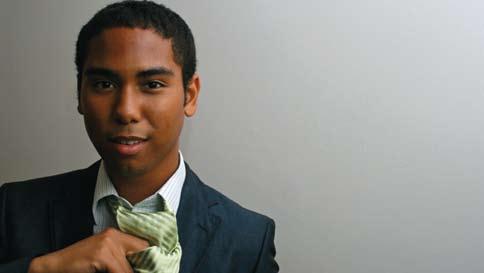
AdvertisingManager SarahScarborough
ProductionManager C.NeilScott
BusinessManager CarolynGriffin
AdministrativeAssistant SherryHolmes
Publisher BoardofStudentPublications
Printer ProfessionalPrinters
Garnet & Black Magazine is published four times a year by students of the University of South Carolina and is distributed free to members of the University community. All editors and staff members can be contacted at 777-1149. The office is located in Russell House room 339. Send letters to the editor to gandbe@gwm.sc.edu or to Garnet & Black Magazine, Student Media, 1400 Greene St., Columbia, SC 29208. Letters should be 250 to 400 words and must include name, address, phone number and academic information (if applicable). Garnet & Black reserves the right to edit for libel, style and space. Anonymous letters will not be published. To inquire about advertising, call the Student Media Advertising Department at (803) 777-3888.
Graeme Fouste has always had a passion for expressing himself creatively. He got started with photography by going to music shows to get practice, which made him the perfect photographer for local band This Machine is Me. You can learn more about them on page 9, and you can see more of Fouste’s work at gfoustephotos.com.
Tas Anjarwalla never really gave Black History Month a second thought before writing this article. Our fearless Features Editor says she “hopes that other people will give her article the chance that it and Black History Month deserve.” See what Tas learned in “Black History Month: To Care or Not to Care” on page 18.
Caitlin Bradley has nothing against St. Valentine’s Day. In fact, our Photo Editor believes that “there is always someone around who loves you,” whether it’s a boyfriend, girlfriend or friends. Her photos of real-life Carolina couples comprise up this issue’s fashion story, “Love in Real Life,” on page 22.
Liz Segrist knows a thing or two about gathering information. She has a lot of experience interviewing people, but her assignment for the magazine had her in uncharted waters. “I’ve talked to people about a lot of stuff, but never about sex,” Segrist says. See how she did with her story, “Sex and the College Student,” on page 30.



Michael Aguilar was inspired by soccer player Aly Shattls’ story of determination. “A lot of people would have a ‘life isn’t fair’ or ‘look at what I overcame to be here’ attitude,” Aguilar says. “Aly stays away from that, though. Throughout her entire ordeal she remained positive and upbeat.” Read Shattls’ story on page 34.
OK — here’s the thing. We, the editors, have given you, the reader, a part of our well-designed, well-written, much-fretted-over magazine that you can control. The space that you’re looking at right now is supposed to be filled with your comments about the last issue. The problem is, none of you comment-


ed. None of you sent your thoughts about the magazine to our clearly displayed e-mail address below. They would have been edited for spelling, grammar and libel, and then displayed here. Even if they were insulting to the work we’re so very proud of, they probably would have been printed. We need your
input, people. It helps us to know whether or not we’re doing right by our readership. After all, it’s you guys we’re doing this for. Let us know how we can keep you happy. If you have a problem with a story, let us know. You’re allowed to. We encourage it. So, go, now, and look through the magazine. Find something you love
and tell us about it! Find something you hate and blast us for it! If you find something you’re ambivalent about, well, you’re on your own. But this space is here for you to use. Don’t make us fill it again. We have 47-and-a-half other pages to worry about.
Thanks so much, The Editors
Mar 2: Atoosa Rubenstein, Russell House Ballroom, 8 pm
Mar 6: Columbia Classical Ballet presents “The Wizard of Oz,” Koger Center, 7:30 pm
Mar 8 – 15: Spring Break, no classes
Mar 14: St. Pat’s in Five Points, 9 am – 7 pm
Mar 17: USC Symphony Orchestra with Marina Lomazov, Koger Center, 7:30 pm
Mar 20: Liberia’s Hope Quilting Initiative, Columbia Museum of Art, 6 pm
Mar 24: The Birdcage, Russell House Ballroom, 8 pm
Mar 30: Student Comedy Competition, Russell House Theater, 9 pm
Feb 7: Men’s Basketball v. Georgia, Colonial Life Arena, 8 pm
Feb 8: Women’s Basketball v. Mississippi, Colonial Life Arena, 3 pm
Feb 10: Broadway in Columbia presents Riverdance, Koger Center, 7:30 pm
Feb 12: Darwin Day Debate, Russell House Ballroom, 6:30 pm
Feb 18: Jeff Corwin, Russell House Ballroom, 8 pm
Feb 16: Presidents’ Day/ Washington’s Birthday

Feb 20: A Night with Kenny the Poet, Columbia Museum of Art, 7 pm
WUSC Dance Party, New Brookland Tavern, 10 pm
Feb 21: Men’s Basketball v. Arkansas, Colonial Life Arena, 7 pm
Feb 23: Last day to drop a course or withdraw without a grade of “WF” being recorded
Feb 25: Charlie Murphy, Russell House Ballroom, 8 pm; Men’s Basketball v. Kentucky, Colonial Life Arena, 7 pm

Spring break is on its way, and what better place to spend it than in Panama City Beach, on the Florida panhandle alongside St. Andrews Bay and the Gulf of Mexico. Whether you’re the stereotypical poor college student struggling to find two coins to rub together, or are planning to travel in style without a budget, there’s a way for you to enjoy spring break this year. Don’t get stuck at home this March — start planning your trip to Panama City Beach today!


Save Round Trip By Bus — $180 on the Greyhound
Splurge
Round Trip By Plane — $1702.50 first class on Delta Airlines

Save Panama City Beach and Pier — public beach access and walking trails
Spinnaker Beach Club & Paradise Grill — meals range from $3.95-$19.95
Coyote Ugly Saloon — dancing with nightly drink specials
Splurge
Club La Vela — (VIP ticket $35) party at the largest nightclub in the U.S. Gulf World Marine Park — swim with dolphins ($150) or train dolphins for a day ($199) Capt. Anderson’s Restaurant — meals range from $15 to $38
Save Flamingo Motel and Tower — $49 per night, or a Spring Break deal of $139 for four people
Splurge
White Sand Rental Key Lime Cottage beach house — $3000 a week
The Edgewater Beach Resort — approximately $2,310 per week

Feb. 6-29: Trustus Theatre will present the modern classic, “The Glass Menagerie,” by Tennessee Williams. This touching play is about a mother living in St. Louis, reminiscing on her wealthy Southern past while constantly nagging her crippled daughter to find a husband. Their story is told by her son Tom as he reflects on the world of illusion that his mother and sister lived in. With its cozy and personal atmosphere, the theatre is a perfect venue for the tale. Trustus Theatre is located in the Vista on Lady Street. Tickets prices vary by night: Thursdays — $20, Fridays and Saturdays — $22.50, Sundays — $17.50. Senior, student and military admission is $15 and students can get tickets half price at the door fifteen minutes prior to curtain time.
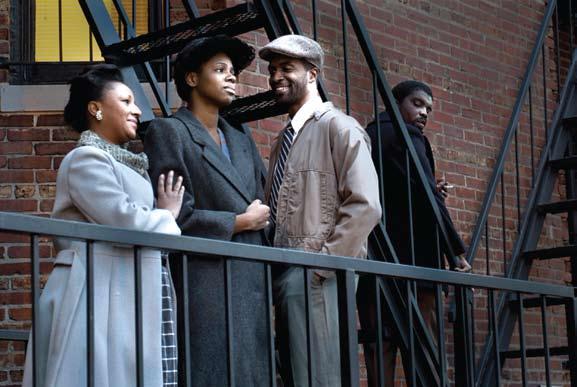
March 21: USC’s Dance Company will be on stage with the stars from The New York City Ballet at the Koger Center at 7 p.m. The program includes “Rubies,” a piece performed by the New York City Ballet soloists, and “Celts,” a Riverdance-esque piece with a Celtic vibe. This is the fourth year the company has worked with New York City Ballet stars such as Wendy Whalen — a collaboration that has been a major success in the past. Student tickets are $15 and are available at the Coliseum.
Throughout February and March: The Columbia Museum of Art will be featuring “The Turner Collection of Chinese Art.” This collection features Korean, Japanese and Chinese art ranging from 2000 B.C.E. to 1268 C.E. Filled with painted ceramics, sculptures and tomb figures, the collection offers a great opportunity to appreciate the diverse artistic talents of our world. The museum is on the corner of Hampton and Main streets. Admission is $2 with a student ID.
March 12-15: “The Greatest Show On Earth.” The Ringling Bros. and Barnum & Bailey Circus is coming to the Colonial Life Arena. Tickets range from $16 to $71 per person. The show is “Over the Top,” Barnum & Bailey’s new live entertainment extravaganza featuring circus stunt riders, clowns, acrobats and nearly one hundred animals, all of which are sure to keep you entertained.
WWant to take someone to an exciting and fun concert this month? Well how about checking out the Columbia-based band This Machine Is Me. This electronic pop-punk band consists of members Jayna Doyle, Blake Arambula, Roscoe Bolton, Scott Long, and Jamie Beavers -- all of whom pour their hearts out each time they play. The band formed with a simple desire to make music, but had a rough start. The band went through two male singers before they found their current lead singer, Jayna Doyle. Doyle met Arambula at a Baumer show and eventually they became good friends. Then later, only a few hours after she’d left her old band in Myrtle Beach, This Machine Is Me called Doyle to record vocals, and later set up a band meeting to discuss her joining permanently.
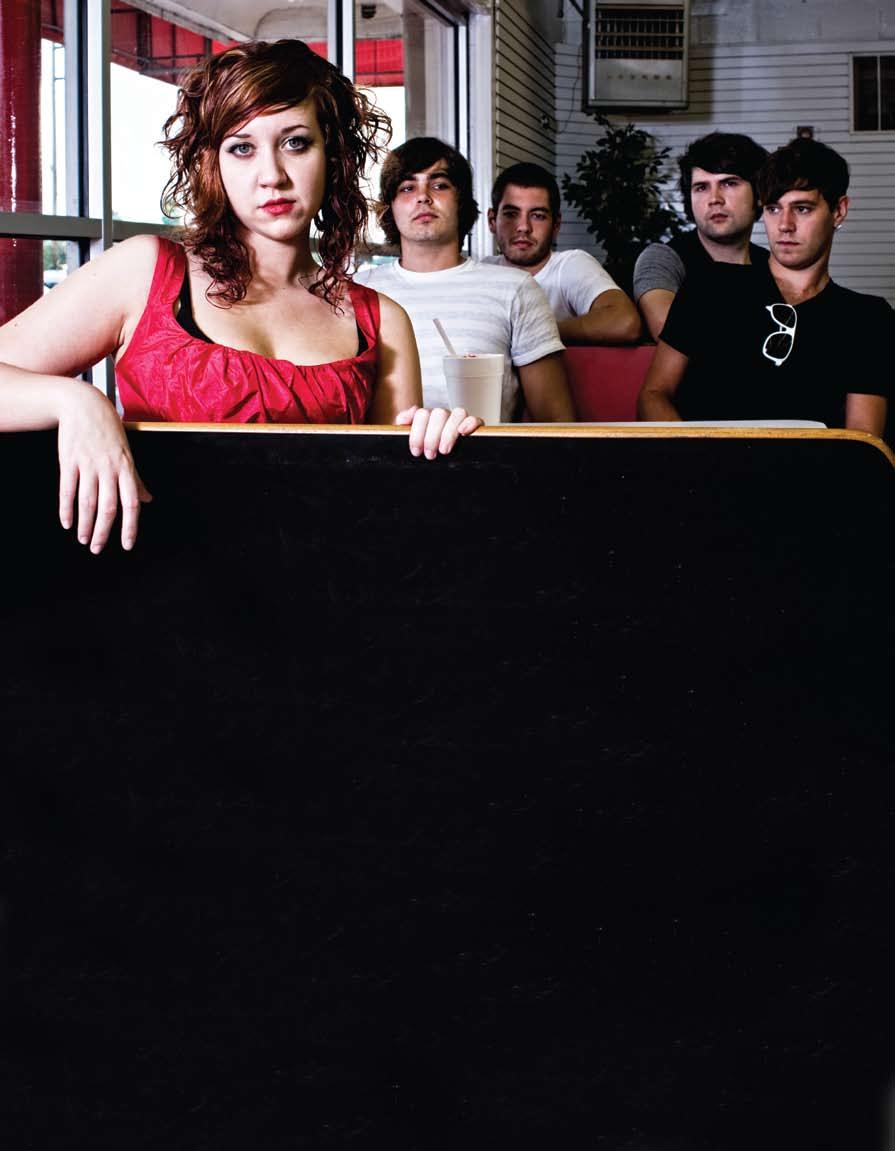
With the help of Carolina Productions, the members had their first show all together, competing in the Battle of the Bands in March of 2007. Now, more than a year later, the band has released their EP “Make Your Move.”
“After sorting the songs out, we came to the conclusion that each song needed to feature the ele-
ments that made us who we are: synthesizers, pianos, dance-y drum beats, and Jayna’s new lyrical content and vocal touches,” Arambula says.
The band has been busy with promotion and has done interviews on WUSC. The local music scene has reacted quite well to them; they attract larger and larger audiences at each show they play. The band has even caught the attention of groups like Shiny Toy Guns, which it had the opportunity to play with in Charlotte last December. What can a person who has never seen them before expect at their shows?
“Comedy and vulnerability,” says Doyle. “We play our hearts out and we have fun doing it.”
The EP is only a small taste of what’s to come as the band moves forward in its career. So what’s next for them? They are putting their EP on iTunes, and also establishing relationships with venues outside of Columbia. A two-month tour is also in the works. Look out for This Machine is Me when they play in Charlotte on Feb. 27, and at the Art Bar in Columbia on Feb. 28. Can’t get enough of This Machine Is Me? Make sure to check them out online at www.myspace.com/thismachineisme.
Photo by Graeme FousteThere’s always something fascinating about romance in films, something innately special that we all have secretly admired since we started taking dates to the movies (or going by ourselves). Last year I ran down the list of clichés we expect to see in romantic comedies. Those certainly haven’t changed, but what’s been interesting leading into this Valentine’s Day is the release of “My Bloody Valentine 3D.” Wow! Forget John Cusack or Hugh Grant going for your heart with clever charm — these guys are going for your heart with a giant pick axe that’s coming through the screen, mixed with some White Zombie music. Geez, I know times are tough, but I didn’t know it had come to this.
Well, this year I focused on the people: the directors, the writers and the actors — the guys that make these kinds of films work despite the clichés that come with the territory. The guys you can call out of the bullpen to satisfy the need for cinematic love. So let’s get dirty with it.
Woody Allen: Without a doubt a first-ballot hall-of-famer in this category. Allen’s “Annie Hall” stands the test of time as an incredibly innovative achievement in expressing the insecurities that come in a relationship. Combined with a career-defining role from Diane Keaton, Allen’s writing focuses on the male subconscious and the continuous feeling of underachievement in romance. Allen beautifully progressed with subsequent work such as “Hannah and Her Sisters,” which takes the two-character plot of “Annie Hall” and expands it into a labyrinth of more than six characters, all seeking happiness in middle-age and beyond. And what a way to continue a great career than with his recent work “Vicki Christina Barcelona.” This guy was Apatow before Apatow.
Kevin Smith: I really am a massive tool, but with “Chasing Amy” alone, Smith demonstrates a range with
characters that he hadn’t equaled before nor has since. It was like he took the “When Harry Met Sally” concept of men and women strictly being friends and tossed in the curve ball of the woman being a lesbian. Once again trolling Woody Allen waters, “Chasing Amy” shows how the experience gap can create tension in a relationship. Ben Affleck’s monologue in the car is a heartfelt delivery that every guy at some point has either said or chickened out of saying at some point in their lives. Take the ending as you will ...
John Cusack: I never can say enough about Cusack. He is the quintessential lovestruck hero who represents the cool outsider from high school all grown up. From holding up a boom box blaring “In Your Eyes” in “Say Anything” to giving a top-5 list for any subject matter in “High Fidelity,” Cusack is the perfectly flawed man that all us guys can look at and say, “See, he makes the same mistakes I do.” For my money, “Gross Pointe Blank” is the perfect hybrid film for both men and women. It’s a love story with a ton of bullets and one of the most kick-ass brawls in film.
Matthew McConnaughey: Just kidding. Hell no. “Failure To Launch?” Well, you got one of those words right.
Hugh Grant: He’s English! He’s clever! We love Hugh Grant! We love everyman Hugh Grant from “Notting Hill.” We love bad boy Hugh Grant from “Bridget Jones Diary.” We even love washed up ’80s singer Hugh Grant from “Music and Lyrics.” Hey, why mess with a good thing?
On one final note, the best love story to come out in the last five years or even longer is “Slumdog Millionaire.” I know, it’s no “Dark Knight,” but as a film that flat out touches your heart, it’s truly a masterpiece. If it is out in theaters around Valentine’s Day, there is no better film to see, and there’s nothing I would recommend more. Hoho!




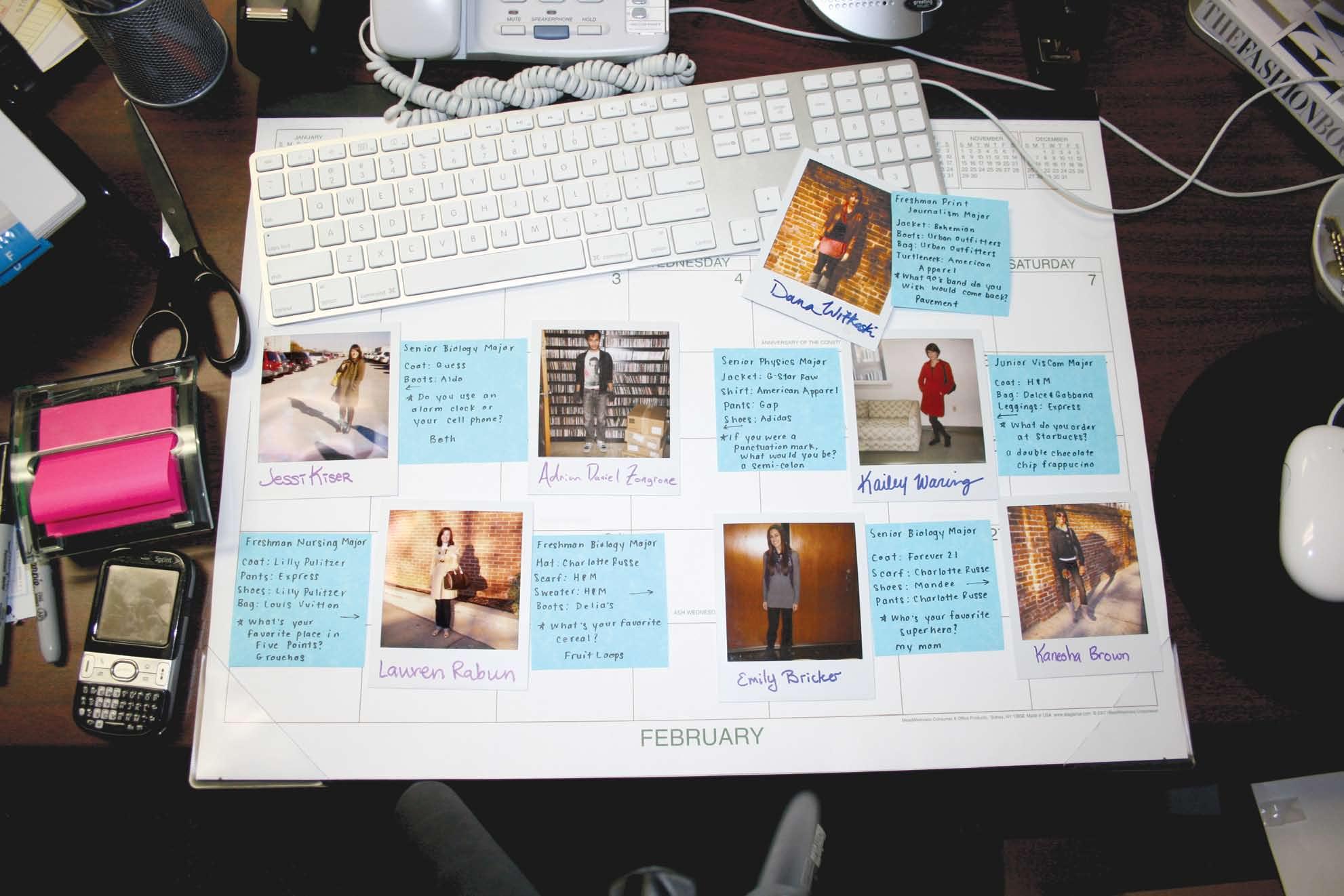

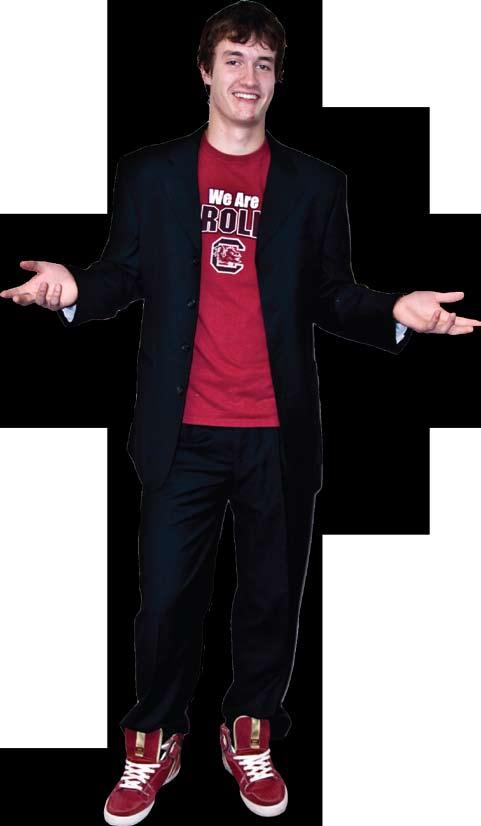 By Martha Susan Morris
By Martha Susan Morris
About 25% of USC students come from somewhere outside South Carolina, so finding a cheap way to get home can be a problem for more than a few people. Peter Schaeffing, a sophomore political science and economics major, knows how hard it can be to get from place to place. As a freshman, the Ohio native says he “didn’t have a car here on campus. Looking for rides was always a pain.” So late last year Schaeffing started CollegeRidesColumbia. com, a Web site designed to connect riders and drivers. The idea is to find someone — or a few someones — who is going in your direction and split the cost of gas with them. In comparison to expensive airline flights that now charge $15 to $25 dollars per bag, using the site is economic and can help you meet new people.
Schaeffing hopes that more students will use the site this semester and in the future. “We have over fifty registered users, but only four people used it over Christmas break,” Schaeffing says.

And Schaeffing knows it’s going to take time and people to make the site an effective tool. “Everyone I’ve talked to says it’s a really good idea,” Schaeffing says. “It just takes initiative from drivers and riders to sign up and use the service.”
But the site isn’t all business. “Right now there’s a small games page,” Schaeffing says. Beating the site’s Columbia trivia or Word Mixer game could win you a $5 gift card to the Corner Pantry, on the corner of College and Assembly streets. And in this economy, as Schaeffing clearly understands, every little cent counts.
Senior public relations and Italian major Caitlin McLaren observes the national fellowships and other awards that her classmates have racked up with an amused eye. She and her roommates count hosting a faculty holiday party in their Horseshoe apartment as their biggest accomplishment of recent months. “You guys can win national awards? Awesome,” she says. “We can throw a hell of a party.”
McLaren is the head coordinator of the Waverly Center, an innovative service program founded by USC students in 2003 to provide an after-school program for the children of Columbia’s Waverly neighborhood. “The drama that happened last night in Five Points loses its importance when you can remind yourself that just on the other side of all those bars is a neighborhood riddled with crime and poverty that also contains a group of amazing young people who are striving, despite their surroundings, for something better,” McLaren says.

McLaren was involved with numerous clubs in high school, but as a freshman she decided to limit her time to activities where she could make a real impact. “Seeing the same kids every week, getting involved in their lives, beginning to notice patterns and behaviors, and eventually learning to love the young students … had an effect on me that completely surpassed every other selfsatisfying mission trip or service project on which I had ever embarked,” McLaren says.
While she emphasizes the importance of making campus-wide friendships and connections, she says the relationships she has forged through Waverly have made the most profound impact on her college years. “No experience, no relationship, and no classroom lesson has come close to rivaling the importance of the Waverly Center to my career as a student here at USC,” she says.
After graduation, McLaren has no concrete plans except to dedicate herself to worthy causes. “I’m a good communicator, but I’m much better at communicating something in which I truly believe,” she says. Whatever path she finds herself on, she knows that she will work for a cause that touches her deeply, and that the best opportunities for service may find her. “I believe my best decision, whether intentional or not, was to allow my experiences here to change me.”
A few weeks ago I was on a shuttle coming from a journalism class when I noticed something I doubt any other person on the bus saw: all of the passengers standing were female, while not one male rider was without a seat. The entire bus ride, I expected that a guy would give up his seat for a woman, but none did. I felt frustrated, not because I wanted to sit down — I was fine standing. It was the lack of regard and gallantry that had me flustered.
The observation triggered a thought about another social situation involving the roles of men and women. I believe more men need to pay for ladies when going out. Not only do men initiate the date most of the time, but in the instances
Not to sound like an anti-chivalrous, chauvinistic miser here, but women should not be averse to paying for the first date. In the midst of all this “change” going on, courtship and dating has — for the better — evolved since the 1950’s, when the male was expected to be the alpha to the girl’s beta while painting the town red. I understand the male paying for the meal is still the standard gentlemanly gesture, but girls, why should you taking the tab be stigmatized as anti-progressive and socially backward? Heck, a lot of guys prefer the “woman-in-charge” image over the expectant and semi-submissive female of yesteryear. I’m not saying you have to go all Xena Warrior Princess in this situation and order your man’s meal for him; however, nothing
is more charming to a guy than seeing his date’s desire to trump what has become his post-meal tithing. Not only will it catch him off guard, but it will also make him respect you for your initiative and emphasize the fact that you’ve clearly enjoyed going on this date with him. Now, if the date was something straight out of an especially awkward scene from “Freaks and Geeks” and you have no plans of ever nodding your head at the guy across from you again, I say go dutch. But, if you have indeed enjoyed something close or comparable with the “wunder” date and it comes down to fighting over the check (which it will), just tell your man that he can pay for something down the road (thereby challenging his creativity and commitment).
That said, any ladies want to buy me dinner?
By Ariana SiporinThe downfall of so many relationships these days is unbalance. All too often, one person in a couple has more control than the other, making the relationship unfair and unhealthy. This can happen when one person makes more of the decisions, such as where and when the couple hangs out, who pays for dinner or picks a movie. Soon one party begins to rely on the other too much. A great way to prevent this from happening is by doing little things like splitting the check. When a couple does this, both parties remain self-
that they do not, it’s common courtesy to at least expect to pay. Now, this does not mean that if a couple has been dating for a while, the guy should pay for every single date. That sounds a little ridiculous even to the more conservative bunch. However, most would think guys want to look the most appealing, and therefore would want to pay, at least at the beginning of the relationship. The date does not have to be expensive; it can even cost nothing. The point is that the handling of the major and minor details of the date should mostly fall upon the man, which does not sound like such an arduous task. Let’s show the world that chivalry is not as dead as it is presumed to be — or at least not at USC.
sufficient and yet can still enjoy being together at the same time. When both parties are sharing the costs and responsibilities of the relationship, it is more likely that they will be happier and have a better understanding of where the relationship is heading. The fairness and balance will also allow the couple to communicate better, allowing each to be more honest with one another and therefore promoting a stronger relationship. Splitting the check is not only fair, but is also a great way to strengthen and enhance a relationship.

to care or not to care
Black people have contributed more to our society than most realize, and many suffer as unsung heroes eleven months out of the year. So why is everyone so apathetic about the twenty-eight short days each year when the contributions of Blacks are supposed to be appreciated the most? As Tas Anjarwalla found out, it’s just too complicated an issue.
I’m supposed to be writing an article on Black History Month. In fact I did write one, but there was absolutely no way I could make it seem anything more than a trite account on why Black History Month is so important. The way we celebrate Black History Month now, well, it’s about as superficial as the article I was trying to write. Morgan Freeman probably said it best when he queried,
too prolific, the awareness of the contributions Blacks had made to society would definitely be a step, even a small one, toward progressive thought. But today, the kind of ignorance and lack of awareness we are exposed to can’t possibly be battled by random facts about the achievements of a few famous black people. Black History Month has become trivialized in the minds of many Americans. Even the way some commemorate the occasion, (like at my old high school for example), is sometimes nothing more than a fact-of-the-day recited during the morning announcements. Other times it’s a misguided tidbit on television incorrectly telling us that George Washington Carver invented peanut butter, (which is one of the few things students actually remember from Nickelodeon’s Black History Month commercials).
“Its purpose was more effective in years past,” president of the Black Graduate Students Associa-
“You’re going to relegate my history to a month? Black history is American history.”
Black History Month started out as Negro History Week in 1926. It was founded by Carter G. Woodson, an incredible historian who was a champion of the Black history movement.
“Black history was largely ignored by historians and the general public until the 20th century. Carter G. Woodson noticed that the role of Blacks in American history had been misrepresented or ignored altogether,” the narrator in a History Channel special on Black History Month said.
So, Woodson founded Negro History Week, placing it in the second week of February because of the birthdays of two important figures in black history— Frederick Douglas and Abraham Lincoln. In 1976, coinciding with America’s bicentennial, Negro History Week became Black History Month, and so we have been “celebrating” it as such since.
And how exactly have we been “celebrating” Black History Month? In a time when racism was
tion, Minnjuan Flournoy, a fourth-year doctoral student who loves Black History Month, says.
“I feel as though in the past, when African-American contributions were trivialized, Black History Month was an effective way to begin to integrate such history into regular curricula. However, now I only hope for all Americans to have a deeper appreciation and respect for what African-Americans have done that have added to the success of this nation—not only in February, but all the time,” Flournoy says.
And Black History Month shouldn’t be thought of as just celebrating the accomplishments of Blacks. It’s about recognizing the incredible advancements that a race of people achievements through amazing feats of perseverance and passion while held under the thumb of adversity.
Basically, no one really cares that George Washington Carver (didn’t) invent peanut butter. After hearing that fact one has the same reaction they’d have after hearing about whomever it was that in-
I only hope for all Americans to have a deeper appreciation and respect for what African-Americans have done that have added to the success of this nation—not only in February, but all the time.
vented jelly—big deal. What’s missing is the historical context behind these facts.
George Washington Carver wasn’t just a black farmer. He was a son of a slave woman, yet he managed to grow up to be recognized by TIME maga zine as a “Black Leonardo” (as in Leonardo da Vinci). His respected contributions to agriculture challenged the mainstream notion that Black people were an intellectually inferior race, and he managed to do all this with the mediocre education that was available to Blacks in the early 1900s. How many television ads say all that?
tory Month,” Flournoy says. “I was always excited to learn about what these people had done because it further reiterated to me what I could be and what I could do. Today, I hope people have the same enthusiasm for learning more about Black history. I hope they do care and become more proactive and receptive to further integrating Black history into their respective academic disciplines and daily affairs.”
Last year, USC’s Black History Month events included a broad range of some pretty interesting activities. Martin Luther King III spoke at the Koger Center; there was a Black History Quiz Bowl; a Hu-
“I wish I could say I was more informed about black history,” Sarah Choman, a sophomore business major says. “February definitely brings Black history to mind a little. The TV specials have helped some, but I learned more about it in elementary school than anything else.” When asked what she remembers the University doing to commemorate the month, Choman said she kind of remembers the big bulletin board in Russell House.
“In years past, I have not felt like USC has done as good a job as it could have in presenting Black His-
man Race Machine was in the Russell House lobby; the annual Birdcage was put on and much more. Now, how well publicized these events were is up in the air.
“I don’t think USC is very successful in creating awareness about Black History Month,” Alex Adelman, a sophomore economics major says. “Honestly I think MTV does a better job.” And many students agree.
“I’ve always been aware of Black History Month because of specials on TV,” Mallory Cage, a fresh-
Seven Black people whose contributions to society are still filling our stomachs, improving our communications and even saving our lives every day.
Carver’s agricultural talent helped the South end its dependence on cotton. His improvement of farming methods got him an invitation to superintend crops all over the world, including Stalinist Russia, but Carver devoted his life to the Tuskegee Institute in Alabama.
The assistant to surgeon Alfred Blalock who helped develop the technique used to correct blue baby syndrome. He also developed the atrial septectomy, which corrects transposed aortae and pulmonary arteries. Blalock described the procedure as looking like “something the Lord made.”
The electrical engineer holds three of the original nine patents that made the IBM personal computer possible. He led the team that developed the computer architecture that allows us to attach external devices to our PCs, and the team that created the first one gigahertz processor chip.
When asked what she remembers the University doing to commemorate the month, one USC student said she kind of remembers the big bulletin board in Russell House.
man journalism major says. “I think they are fairly effective even though those ads are more about awareness. But, they don’t teach you more about it. I think Black History Month is important; everyone should be proud of their heritage.”
And Black history is a part of every American citizen’s heritage, after all.
“I want nothing more than for people to understand that Black History Month is not geared toward African-Americans only,” Flournoy says. “At Black history programs and events, we want to see people of all races and creeds supporting our respective celebrations. It would be phenomenal if fellow Gamecocks could be as excited about Black history as they are about Homecoming and as they were about the 2008 presidential election. I think this year there are plans to coordinate efforts and programs across departments and organizations, which is a significant step in the right direction.”
Black History Month means different things to many students on campus. Some see it as a time to reflect on the contributions Blacks have made to society, while others see it as a way to learn about a different culture altogether.
“I feel like it’s a good time for us to appreciate all the people who have made an impact in AfricanAmerican culture,” Adelman says.
Growing-up, students have had different experiences with Black history.
“We focused a lot on Black history in the fourth grade, especially. It was probably more the curriculum than anything to do with Black History Month. I don’t really know,” Choman says.
After transferring from a predominantly white, af-
fluent Catholic school to a public school, Adelman definitely noticed a difference.
“Black History Month was kind of superficial at my school. It was different, more trivial in Catholic school than it was when I went to a public high school. There it was kind of a bid deal,” Adelman says.
One of Adelman’s roommates, Devaid Espindle, who went to school in the North, felt that his exposure to Black History Month was pretty limited.
“I think that Black History Month is definitely different here in South Carolina than it is back home in Massachusetts,” says Espindle, a sophomore broadcast journalism major. “My school was like 98% white and Asian. I think here you learn more about Black historians and events, but it’s not the same where there are fewer African-Americans. But honestly, I think every type of culture should be honored.”
Which brings us to that final question. Is Morgan Freeman right? Isn’t Black history American history? Why relegate it to a single month? Is it about awareness? Tradition? Is it a battle against ignorance? If history books now teach all the things we would learn during Black History Month, then does it still serve a purpose? Or is Black History Month important in recognizing the achievements of a subjugated race? What about the contributions Native Americans and Latinos have made to this country? Why isn’t Hispanic Heritage Month more popularized?
Or maybe the real question is “Did this girl just write about Black History Month without mentioning Martin Luther King, Jr. or Barack Obama?”
A pioneer in heating, ventilation and air conditioning. His numerous innovations led to 30 patents that make modern HVAC systems possible. The heating system at Radio City Music Hall in New York City is among his more famous work.
The mother of video surveillance, Brown invented a closed circuit television security system in 1966. She and Albert Brown got a joint patent for the device, which included a motorized camera in a box with four peep holes, three years later.
The former NASA analyst patented an illusion transmitter in 1980. The device uses concave mirrors which bend images to make the eye see them as if they were projected into the room. If television is ever transmitted in 3D, her device will have paved the way for the technology.
Kenner invented a sanitary belt for women to wear during menstruation. It included adhesive attachments that made wearing a sanitary napkin easier and more comfortable than using previous versions of the belt.
As Drew Barrymore points out in “He’s Just Not That Into You,” there are a ridiculous number of ways to contact someone in this modern age that don’t involve any sort of actual person-to-person interaction. Profile pictures and statuses override the personal part of personality. All this technology drastically affects the way we get to know people. You can go on Facebook and know someone before even meeting him or her. It’s easy to identify mutual friends, favorite TV shows, movies, books (if you happen to read), hobbies, sense of humor and probably alcoholic beverage of choice, all in a five-minute scope of a one-page profile, pictures and wall posts. No first date necessary.
And so, the art of dating, courting and developing a relationship is dead.
“I feel like expectations have shifted. I feel like actual dates are now taboo,” Eryn Flanagan, a sophomore hospitality management major, says.
So often we get caught up in our fastpaced, technology-based lives that we don’t realize how much things have changed.
How much? This much:
In 1969, Jane lived in an all girls dorm, with no computer of her own, and definitely no cell phone. There was a house phone in the hallway shared among about 24 girls. In
order for Charlie to see Jane, he would call the house phone. The house mother would answer, and he would then have to ask to speak to Jane. Jane would run to the phone, quite excited that a boy was calling, and politely ask what his intentions were. Charlie, after having planned out this conversation in his head at least five times before calling, asks Jane to accompany him to a concert sponsored by the university. Jane, elated, accepts his invitation. Charlie arrives at the all girls dorm at his set time, waits in the lobby for the house mother to get Jane from her room, leaves for the dance, and returns Jane to her dormitory before 11 pm.
What a joke.
In the current college social scene, it’s third base before last names, it’s a “hey sexi what u doin” text instead of a call, it’s parties instead of dinner. Not too long ago girls giggled over a surprise kiss at the end of a first date.
“I love the old fashion ways of dating. I wish we still wrote letters and boys opened doors instead of honking the horn outside,” Flanagan says.
College students who follow this old school technique are now in the minority.
So, why is it so difficult for us to go on actual dates? Is romance, as we know it, dead? Who holds the blame?
Though many girls would love to point
By Caitlin Bradley and Jen Howellthe finger, it isn’t entirely the guy’s fault. Girls aren’t demanding to be “wooed.” In fact, they are just as likely to make a booty call as any guy. Girls have come to accept a lower standard of romance, and because of this, boys have continued to slack off. No one wants the responsibility that comes with going out on dates.
“When you are of the right age, dates usually consist of groups going to a bar. If anything goes wrong at least you’ll have your friends there. Dating is more of a group thing now,” Taylor Miller, a junior nursing major, says.
Though our generation needs to take some responsibility for its actions, or lack thereof, there are certain external factors that make it extremely difficult for college students to date as well.
Media is often blamed for the desensitization of American youth. It may sound ridiculous, but it is hard to deny the strong effect media has on our lives. No one is more affected by the media than college students. In our environment, quoting movies is hip and knowing every word to a ‘Lil Wayne song is admirable.
“Media and technology definitely play into it. You don’t go on dates anymore, you text and stalk on Facebook,” Miller says.
It’s possible to text someone from anywhere. And when they aren’t studying or
going downtown, you can most likely find the average student sitting in front of their television or computer, refreshing that Facebook page instead of trying to meet with the person they’re stalking. Television’s fictional plotlines and so-called “reality” T.V. are warping our romantic expectations and reinforcing the idea that the ultimate goal is the hook-up, not the relationship. Who really needs to date, when they can live vicariously through “The Hills”? It probably doesn’t help that Ludacris keeps reminding us to “shake our money maker.” Why not have endless “textual relations” with people, instead of conversing over lunch?
“Texting is ruining relationships. You loose the personal interaction,” Sarah Wagoner, a sophomore business major says. People have even become averse to switching from their QWERTY keypad to the dialpad and actually calling someone.
“I feel like texting changes the pace of stuff,” Eric Bradford, a senior English major says. “If you are on the phone with somebody it concentrates all the interaction within a 5-10 minute phone call. But with texting you can do it casually over a much longer period time. I’ll definitely text someone before I call them. Even just to make plans.”
Many people use texting to avoid uncomfortable moments. But, how do you know if you’re comfortable with someone if you only interact through text or Facebook?
“People are awkward in social situations now because they only interact through technology. An actual relationship can form out of a hook up,” Miller said.
This is especially true when alcohol is involved.
“Alcohol loosens people up when they’d normally be nervous. And that often leads to a hook up,” Miller said.
Oh our dear friend Jack Daniels. He is a lot of fun and always the life of the party. But Jack does tend to kick the socializing process into hyper speed. In recent decades, parties and alcohol have turned the dating world upside down. Nowadays, the “meeting” process tends to go like this:
1. Drink
2. Go to party
3. Sip on some PJ
4. See a cute boy
5. Make out with cute boy
6. Wake up the next morning wondering what happened between the hours of 1 am and 4 am, and why exactly does that boy in your chemistry class look so familiar?
OK, that may be a bit dramatic but you
get the point. Not to knock Thirsty Thursdays — it’s all part of the college experience — but it simply needs to be pointed out that our perception of the proper dating sequence has gotten rearranged.
“I feel like people take dating much lighter. So, it’s ok to see more than one person in a week. If you want to take a few girls out each week, though, it can get pretty expensive,” Bradford says.
Even taking out the same girl a couple of nights a week can be pretty hard on the wallet. It’s a too true fact that most college students don’t have a lot of spare money lying around. This factor definitely affects the campus dating scene. Dinner and a movie can cost up to $75 dollars. It just isn’t possible for students to go on tons of dates. The funds just aren’t there. But coming up with creative alternatives should be the solution, not forgoing dating altogether.
There is nothing wrong with splitting the costs of dates.
“I don’t always pay for both of us,” Bradford says. “I don’t know, I guess if you dated the traditional way it could get really expensive, especially when the dude pays for everything.”
Girls, cut the guy some slack and pick up the check every now and then. Staying home and cooking a romantic dinner is also a good idea. Rachel Ray can help you become quite the chef, and all within thirty minutes. When the weather warms up, why not take the meal outside and have a picnic on the Horseshoe? Every weekend, the Russell House Theater plays good movies for (get this) free! Dating doesn’t have to be an expensive ordeal and romance doesn’t have to become a thing of the past. You just might have to begin to think outside of the box.
But remember, it isn’t official until it’s Facebook official.
The local microbrewery and restaurant has a surprisingly comfortable atmosphere, which brings in a lot of people. They don’t take reservations, so be sure to get there early if you want a table.
900 Main St. Columbia, SC 29201 (803) 748-0540
West Columbia’s best-kept secret has one of the greatest brunch menus in the area. You’ll have to cross the Broad to get there, but the stone-ground grits and Hangover Hashbrowns are worth the trip.
118 State St. West Columbia, SC 29169 (803) 794-6634
It sounds weird, but at the right time of day (after the lawyers leave), the grounds at the capitol are really very pretty. It’s unconventional, but you’ll get big points for originality.
Gervais St., between Assembly and Sumter streets
Nonnah’s
The quaint restaurant-slash-art gallery makes some of the best desserts in the city. If your date has never been there before, suggest the Deep Dish Apple Praline Pie. It may change your relationship for the better.
930 Gervais St. Columbia, SC 29201 (803) 779-9599
Even if you aren’t an art person, the openings at 80808 are a great way to take in a show. And with a group of thirteen artists and other contributors staging shows year round, the gallery always has something new.
808 Lady St. Columbia, SC 29201 (803) 252-6134

Who they are: she’s a junior fashion merchandising major, and he’s a junior chemistry major
They’ve been dating for: three-and-a-half years
How they met: “We met in middle school,” Shrader says.
Their first date: “It was a movie. It was Madagascar,” Watts says. “We played tag in the movie theater instead of watching the movie.”
Their secret to happiness: Being best friends and compromising.
On Betsy: Coat, sweater, skirt, belt and purse all from Van Jean
On
They say love is a manysplendored thing. And who wouldn’t see splendor in the company of someone who truly cared about them? Here, four real-life Carolina couples enjoy the visual beauty of spring’s coolest looks, and the comforting feeling of having someone to love.

Who they are: she’s a senior broadcast journalism major, and he’s a sophomore math major They’ve been dating for: three months
How they met: “It all started at Starbucks,” Delain says. Her favorite gift from him: A pair of earrings and a necklace from Chanel
Their secret to happiness: Honesty, communication, and trust.
On Danielle: Dress from Van Jean, necklace from Just the Thing
On Lorenzo: Suit from HipWaZee
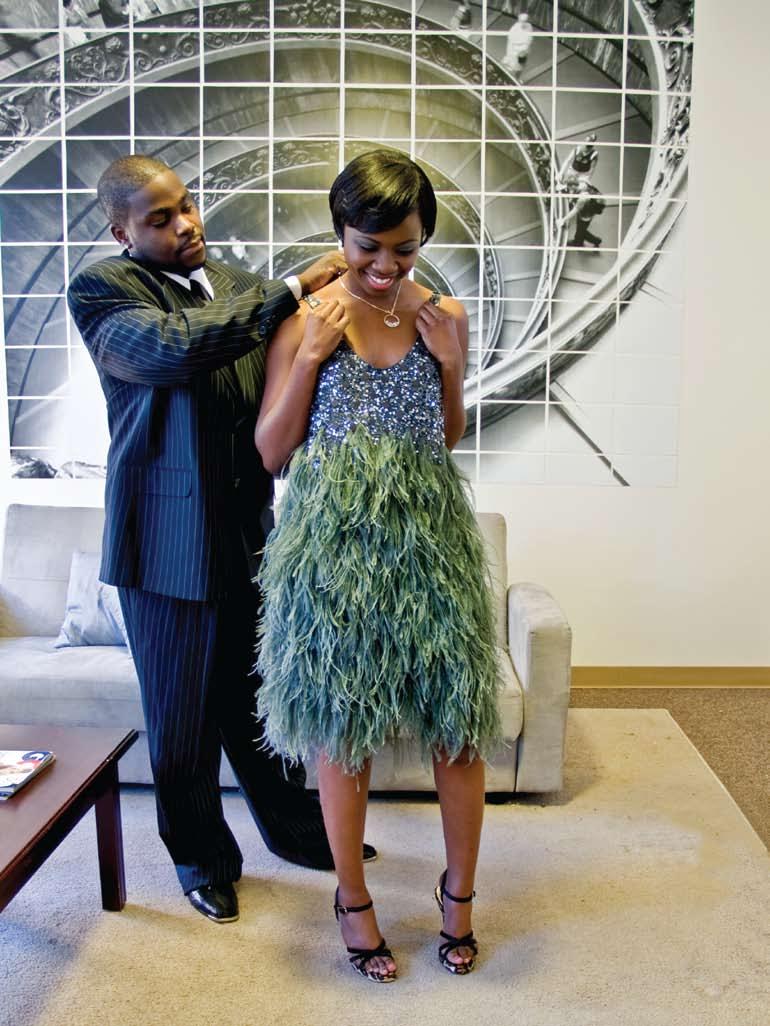
Who they are: she’s a junior media arts major, and he’s a junior political science major They’ve been dating for: six months
How they met: “We met through a mutual friend,” Dillingham says. “We’ve been friends for a while.”
What he likes most about her: “When she laughs uncontrollably.”
Their secret to happiness: “Leaving the day’s worries behind and focusing on each other more,” Williams says.
On Catherine: Dress, sweater and purse from Van Jean

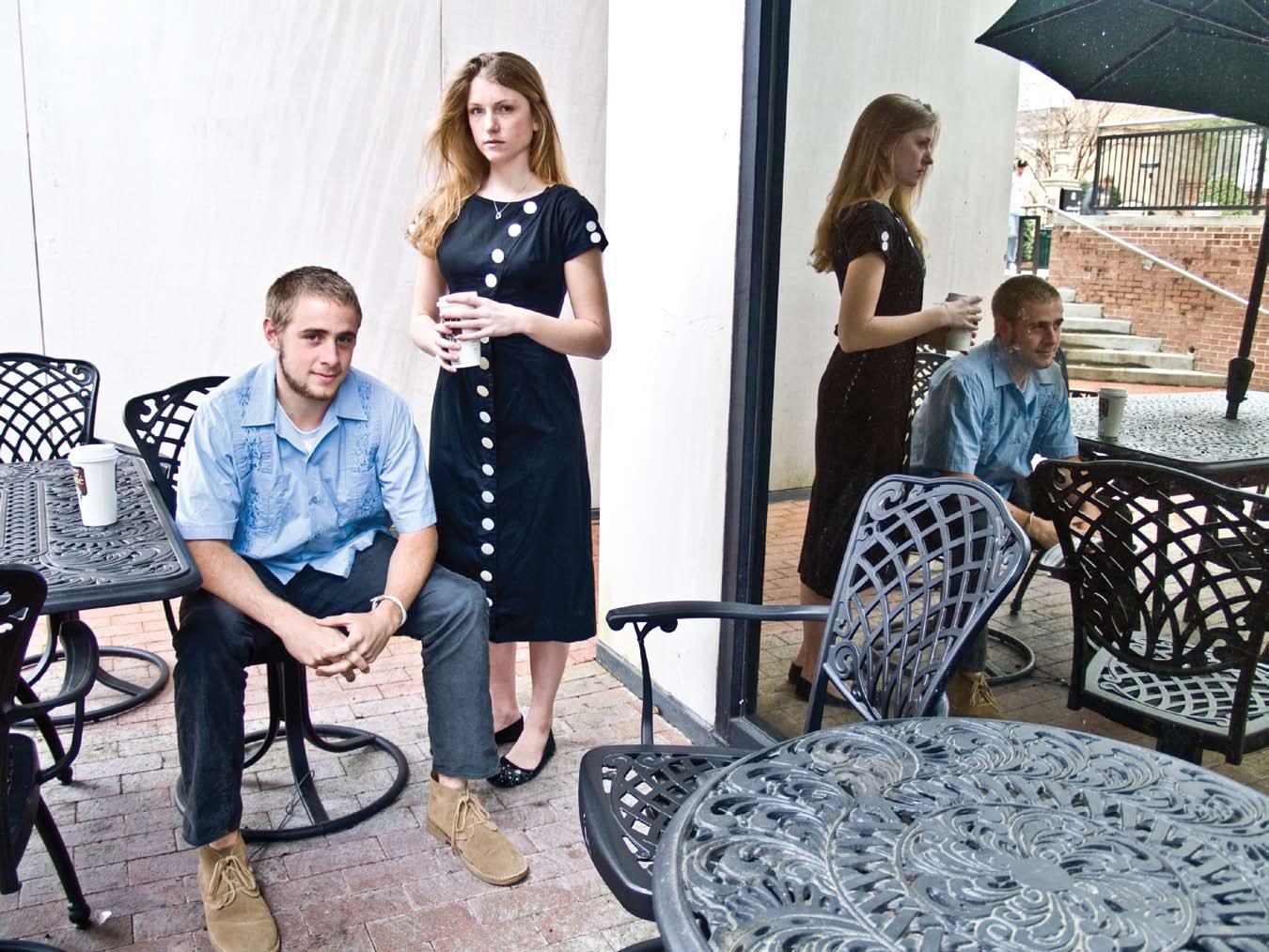
Who they are: she’s a junior ballet performance and political science major, and he’s a sophomore psychology pre-med major
They’ve been dating for: five months
How they met: At a French House Frisbee party

What they dislike about each other: “He eats onions,” Boiter-Jolley says. “I don’t like makeup, and she wears makeup,” Bartels says. “Some people are naturally beautiful.” Their secret to happiness: “Compromising and being willing to accept the other person,” BoiterJolley says.
On Bonnie: Dress from HipWaZee
On Harry: Shirt from HipWaZee
Van Jean 2734 Devine St
Columbia, SC 29205
(803) 252-4339
Just the Thing 2732 Devine Street
Columbia, SC 29205
(803) 771-9969
Bohemian 2736 Devine Street
Columbia, SC
(803) 256-0629
HipWaZee 940 Harden Street
Columbia, SC 29205
(803) 376-1500


Whether you’re in a long-term committed relationship with someone you love, or you’ve been in a waiting room nervously tapping your foot waiting for STI test results, or if you’ve ever woken up and found a stranger in your bed; you’re in college and sex plays a role — even if you’re not having it.
Regardless of whether you’ve had multiple partners, only one or if saving yourself for marriage, what was considered a hush-hush topic in decades past now has USC students speaking out about their strong opinions ranging anywhere from STI testing to their number of partners.
Jess Rivera, a junior sports and entertainment management major, says she believes sex is openly talked about among students and that college students have more information regarding safe sex than ever before, but that doesn’t mean they always apply it when they’re getting busy.
“I think that it’s always in the back of people’s minds, but unfortunately not to the point where they will let not having a condom put a stop to whatever the heat of the moment is leading to,” Rivera says. “I would say they’re smarter, as in more educated, but not smarter, as in being more careful.”
According to a study done by the Centers for Disease Control and Prevention, in South Carolina in 2007, for every 100,000 people in the state, approximately 612 had Chlamydia, 2.1 had syphilis and 239 had gonorrhea.
Adam Arbogast, a junior sports and entertainment management major, says he holds the media’s portrayal of sex responsible for this view.
“Now, sex is depicted through the media as a natural, fun act that happens all the time, and how often sex is used in like TV and movies,” Arbogast says. “It just brings sex more into the forefront as opposed to morality or religion or whatever was holding people back in the past.”
Arbogast says although alcohol may stimulate sex, people would “definitely still be having sex without it.” He says that for the most part, “sex has become a huge part of college life.”
According to The Kinsey Institute’s Web
site, 18- to 29-year-olds have sex 112 times a year on average, compared to 86 times per year with 30- to 39-year-olds and 69 times per year with 40- to 49-year-olds.
Rivera also says she thinks the majority of college-aged students view sex as casual, or “or at least something that’s acceptable to do with a person they’re ‘hooking up’ with and maybe not even exclusively dating.”
However, she says she believes the larger the number of partners someone has, the more they will be judged.
“I feel like there is a non-specific number line, kind of, that once it’s crossed people will be like, ‘Oh wow, he’s slept with how many?,” she says.
Niki Brabec, who graduated from USC in 2007 and currently works at a Charlotte insurance company, says she believes whether one has had multiple partners or is still a virgin, others will judge you.
“People tend to think of you differently if you have had many partners compared to if you haven’t had any or just had one or two,” she says. “I think students judge virgins, but I think they respect it as well.”
Liz Elliot, a junior international business and marketing major, says although most college students are more casual about sex, many still strive for an emotional connection, too.
“I think they are casual about sex if it is with someone they are dating, but not so much on a ‘one-night-stand’ basis,” Elliot says. “They usually want a relationship too.”
However, she does think college students judge a college-aged virgin more so than a college-aged person with multiple sex partners.
“I think people judge more if you are a virgin than if you have had multiple persons, and that the judgment isn’t necessarily bad. So yes, I think people judge,” she says.
Rivera says from a “girl’s perspective” it is admirable to be a virgin in college, but she has her doubts as to a guy’s perspective.
“I don’t know if a guy would think differently,” she says.
Arbogast says he definitely thinks today’s
college students are more harshly judged by one another if they remain a virgin while in college.
Despite the regularity of sex within the college setting, Arbogast says sex can create pressures within students as well.
“I think it definitely pressures guys because guys tend to think sex can make them ‘a man’ or make them cool or powerful,” he says. “Maybe even girls, too, because maybe the girls that would typically be against sex or wouldn’t do it often now, do it because they feel pressured to fit the norms.”
Brabec says although college students are usually open to discussing sex among themselves, it stops there, and that this openness to discuss doesn’t necessarily translate to safe sex.
“I think college students talk openly to each other, but I don’t think they would openly discuss it with their parents, older generations, et cetera,” she says. “I think they know they should be careful and should get tested, but I don’t think they actually go do it like they should.”
According to the Kinsey Institute Web site, a 2004 study done by the Center for Disease Control and Prevention showed that an estimated, “19 million new sexually-transmitted infections occur each year, almost half of them among young people ages 15 to 24.”
Elliot disagrees with the doubts in college students to take responsibility regarding STI testing.
“People are open to talking about sex and they’re smart about testing,” she says.
In 2007, 7,019 people in Richland County received HIV testing. Of that amount, 118 received positive tests according to the South Carolina Health and Environmental Control Department.
Arbogast too says he doubts that sex education sticks with college students outside of the classroom setting.
“I don’t think they really internalize what they are learning,” he says.
“People tend to think of you differently if you have had many partners compared to if you haven’t had any or just had one or two. I think students judge virgins, but I think they respect it as well.”

Four Student Media kids try to decide if there’s a right time to introduce sex in a relationship
Junior print journalism major Editor in Chief of The Daily Gamecock

“It varies depending on each individual person and each individual couple … You can’t just go right into something like that. It’s a big decision. A big choice. It needs to be something that both people are ready to do and something they want to do if they are in a committed relationship.”
Sophomore visual communications major Photo Editor for Garnet & Black
“Personally I like to be in love with the person before I get that close to them, be that intimate with them. It’s really a personal preference though. Some people end up sleeping with someone the first night they meet them. Just don’t be surprised when I call you a slut the next morning. I mean, it’s OK to have sex whenever you want to, as long as you don’t put yourself in a situation where you’ll regret something. I don’t think it’s necessarily a bad thing to have friends with benefits to alleviate sexual desires; I wouldn’t look down on it.”
Senior broadcast journalism major Producer for SGTV
“If you are very serious about the relationship and your partner, then you shouldn’t do it too early because it could mess things up. You want to establish a good relationship beyond sex before you engage in that. So that depends on the couple and the people, but sooner rather than later is probably not the way to go.”
Freshman broadcast journalism major WUSC DJ
“I don’t know. I don’t like to put time limits on stuff like that because you are always going to have different chemistry with different people. So I would say that when you two both decide that it’s time to take it to that level.”

After a successful first year with the USC women’s soccer team, Aly Shattls got a summer spot with an Atlanta-based soccer club. During her very first practice with them, Shattls was running a simple warm-up drill when she slipped on a ball and felt a distinct pop in her knee. Perhaps it was the immediate adrenaline rush that the body emits when it feels excruciating pain, or perhaps it was the drive of a young girl who refused to give up on the game she loved, but something made Shattls get up and try the drill again. It didn’t take long for her to realize that something was seriously wrong.
“I got up and started playing again, and immediately (my knee buckled) again,” Shattls says. “So, I kind of knew something was wrong at that point. The first thing that you think of when you think of knees is ACL, so at first I was hoping that it wasn’t (that). In the back of my head though, I knew. The ACL was always the one injury that I didn’t want to get, it could be anything but that.”
Shattls and her mom, who was in Atlanta at the time, called the family
orthopedic surgeon to ask for help. He told them that he couldn’t diagnose over the phone and it would be best if they sought medical attention immediately. The Shattlses did so and drove to Columbia to meet with the team trainer. While the trainer was hesitant to give a diagnosis without an MRI, the MRI showed that Shattls’ anterior cruciate ligament was, in fact, torn.
The then-soon-to-be sophomore, after many tears, drove back to Huntington to have surgery and begin her rehabilitation. There was no doubt that she felt something had been stripped away, something she’d been looking forward to for a very long time.
Shattls’ love for soccer had been a lifetime in the making. When she was just five years old, a friend of hers spent the night at her family home in Huntington, W.Va. The next morning Aly and her parents drove her young friend to a soccer game. Aly watched this game for no more than thirty minutes before telling her mom that she “wanted to do that.”
The daughter of athletic parents (her mother swam at the University of West Virginia and her father spends
his spare time running marathons), Shattls took to soccer like a duck to water. It was only a matter of time before she had joined up with an under-12 club travel team at the age of eight.
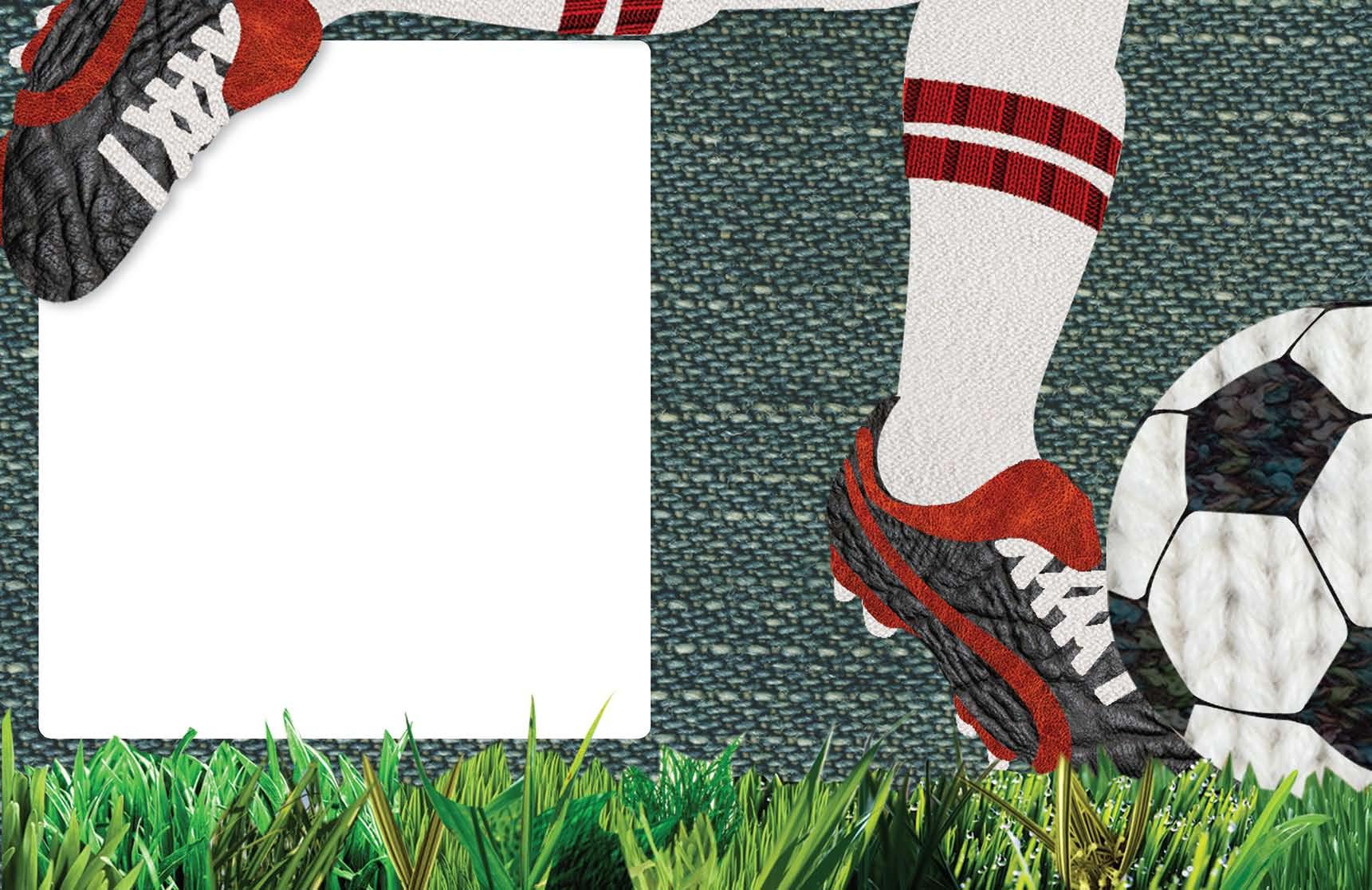
“What we saw (when Aly played for the U12 club) was the competitiveness and being able to outshine the 12-year-olds,” Steven Shattls says. “That’s when we saw that she had that fire to go up against and not fear these bigger kids. It was like nothing for her.”
By the time she reached high school, tennis, gymnastics and track had all been pushed to the side, and her dad was driving her three hours to practice in games so that she could compete with a higher-level club team in Ohio.
There was little doubt in her mind that she had found the be all and end all of passions in her young life.
“I think that I knew from the time that I started playing club that I would never want to stop,” Shattls recollects. “It’s just when I played I loved it, it’s hard to describe.”
It wasn’t too long after her days in U12 and U14 travel leagues that

Shattls found herself facing a question that many young people face. Where to go to college?

Soccer was big a priority. Shattls began her college visits by attending the USC women’s soccer team annual summer camp.
“It was the summer before my junior year in high school,” Shattls remembers. “Me and my dad were driving and we got on campus and I was like, ‘Dad, I love this.’ I kind of knew that it was definitely going to be one of my big options. I just love the feel of the campus. It’s so pretty here, it’s a lot different than West Virginia.”
Shattls didn’t struggle over with her college decision. While many high school students can get caught up in balancing one college’s merits over another
school’s highlights, Shattls saw the perfect mix of caring and knowledgeable coaches, great team unity and the type of school she wanted to be at in South Carolina. She visited a few other schools, but felt that nothing really compared to USC and committed without much delay.
But actually coming to USC wasn’t as easy as picking USC. Shattls found herself packing her things and moving away from the family and friends that she had known all her life on July 26, 2006, her 18th birthday. Shortly after moving into her new home in Columbia, the preseason began. Shattls will be the first to say that transition from high school and club soccer to college soccer is not an easy one.
“It’s definitely a totally different game than high school and club,” Shattls says. “It’s faster, it’s more physical; it’s totally different.”
However, Carolina’s 2006 team was a talented one that was top heavy with upperclassman leadership. Shattls’ class was brought up by some of the best to roll through USC’s women’s soccer program. Two of USC’s upperclassmen, Courtney Cobbs and Ashley Kirk, would be named second team All-SEC.
Shattls didn’t get much playing time her freshman year and spent the spring learning more and more about Carolina’s system for women’s soccer. By the end of the year, Shattls had decided to go the route of many of her teammates: playing for one of the nation’s higher-level women’s club soccer teams.
“After freshman year you think that you have the whole summer to prepare for your sophomore year,” Shattls says. “That was what I was looking forward to, was preparing and getting better for the fall and that was all gone in two seconds.” Luckily, her teammates refused to allow Shattls think that her injury meant the end of her career with Carolina.
“I got messages from almost all of the girls saying, ‘You’ll get through it, it’ll be fine,’” Shattls says. “I was shocked. We’re great friends and everything but those messages helped me a lot. We had a girl on the team who tore both ACLs and a meniscus and she called me the day she found out. Hearing those things from people that have and haven’t experienced it, it helps a lot. Without them doing that, it would have been a lot more difficult on me.”
From the time that she was five until the summer of 2007, the longest Shattls had gone without playing competitive soccer was four weeks. The recovery time on her ACL tear was up to eight months. She spent those eight months completely immersed in how to get back to 100 percent. She spent endless hours rehabbing her rebuilt ligament and supporting her teammates. All the while, she kept her chin up and, most impressively, stayed around soccer. Instead of letting the sight of her team fighting through another season bring her down, she made it a point to show that she could still be a part of that team.
“It was difficult (watching the season),” Shattls says. “But our coaches always tell us, ‘Everyone has a role on the team,’ and those words are literally what got me through the season. I knew that I still had a role on the team. I did everything that I could to help them out. For me, that was the only way that I felt a part of the team.”
Finally, spring rolled around and all of Shattls’ hard work paid off. She was back in the mix of things and practicing again. She fought back fears of a reoccurring injury and picked up where she left off.
“Sometimes practices, any athlete will tell you, will get redundant,” Shattls says. “I never felt that way; I was excited for practice. I didn’t care if we were running sprints at the end. I was out there with my team and I was a part of the team. I
was a part of the team (while I was injured) but I was actually doing everything the other girls were doing and that made me extremely happy.”
It’s been said that happiness is good health and a short memory. No matter how quickly Aly Shattls tried to forget her ACL tear, no degree of short-term memory loss could erase the sickening popping that she began to feel in her knee after she returned to the playing field.
At first it was just a matter of excruciating pain and a distinct popping noise. Her trainers were cer-
For what seemed like the first time in forever, when Shattls woke up from the anesthesia the doctors had good news. Her ACL was intact.
“I was ecstatic,” Shattls laughs. “I started crying. I was so happy. For me that meant that I could be back in three months.”
Shattls still wasn’t out of the woods yet, though. Even though the timetable for her return was set at three months, it has taken much longer for her to gain back the muscle mass that she lost after the surgery. As she continued rehab the doctors continued to
If I told myself that it was going to be OK then I was happier and it just made things easier to try and stay positive. Obviously it’s really hard and you can’t do it all the time but with help from my roommates, parents and coaches it was easier.”
Even though she’s been through a lot, Shattls still recognizes that some people have been worse off than her.
tain that it was just scar tissue, as is common in ACL repairs. However, as time wore on, the feeling got worse. Until, finally, it came to a head when she stretched out and blocked a shot, felt several pops, screamed, fell to the ground and found that she could not straighten her leg entirely.
It was wash, rinse, repeat for Shattls as she went through the diagnosis ladder and MRIs all over again. Finally, when all the tests were done the doctors could only say that Shattls’ meniscus, a piece of cartilage in the knee, had flipped up into her joint and there was a 50 percent chance that she had also torn her ACL. The doctors said they wouldn’t know until after surgery.
push back her return date. After a short and very painful attempt to return the team, trainers decided that it would be best for Shattls to just sit out the rest of her third season with the team, when originally they estimated she would be ready for the beginning of the season. Somehow though, Shattls kept her head up through it all. After playing soccer consistently from age five all the way to 19, it has now been nearly two years since Shattls played competitive soccer for more than a few weeks. Most people would have lost a lot of their spunk; Shattls’ personality still shines through a lot bigger than her slight five-foot frame.
“I always tried to stay positive,” Shattls says. “That was my thing.
“I don’t feel like I’ve gone through as much as people I know have gone through,” Shattls says almost apologetically. “I don’t want it to seem like I’ve gone through a whole lot when I know other people have gone through a whole lot too.”
So this isn’t the story of the hero overcoming the obstacles that no one else could overcome. Even Shattls admits that if that’s what this story is, then there are others more qualified to be the focus. What this story is though, is the story of a girl who loves soccer and will fight against and beat anything that tries to keep her from it. Whether Shattls will admit to being that girl or not, she is.

“I don’t want it to seem like I’ve gone through a whole lot when I know other people have gone through a whole lot, too,” Shattls says.
One thing I like about Headliners is that it does host more established artists, like Shiny Toy Guns and Boys Like Girls. The venue is larger than New Brookland Tavern, but still manages to feel intimate.
Although Headliners is conveniently located in the Vista and a bit cleaner than New Brookland Tavern, Headliners just isn’t up to par with the rest of the venues in Columbia. There was Jammin’ Java before it closed which — although it was small and farther from campus — it also had that intimate setting like NBT. Headliners rarely brings in local talent, and therefore doesn’t focus on the community aspect like New
By Jaclyn Bull Photos Grace ChengWhich local music venue rocks the hardest? We put Columbia’s most popular music spots head to head to find out which one would win the Battle of the Stages.
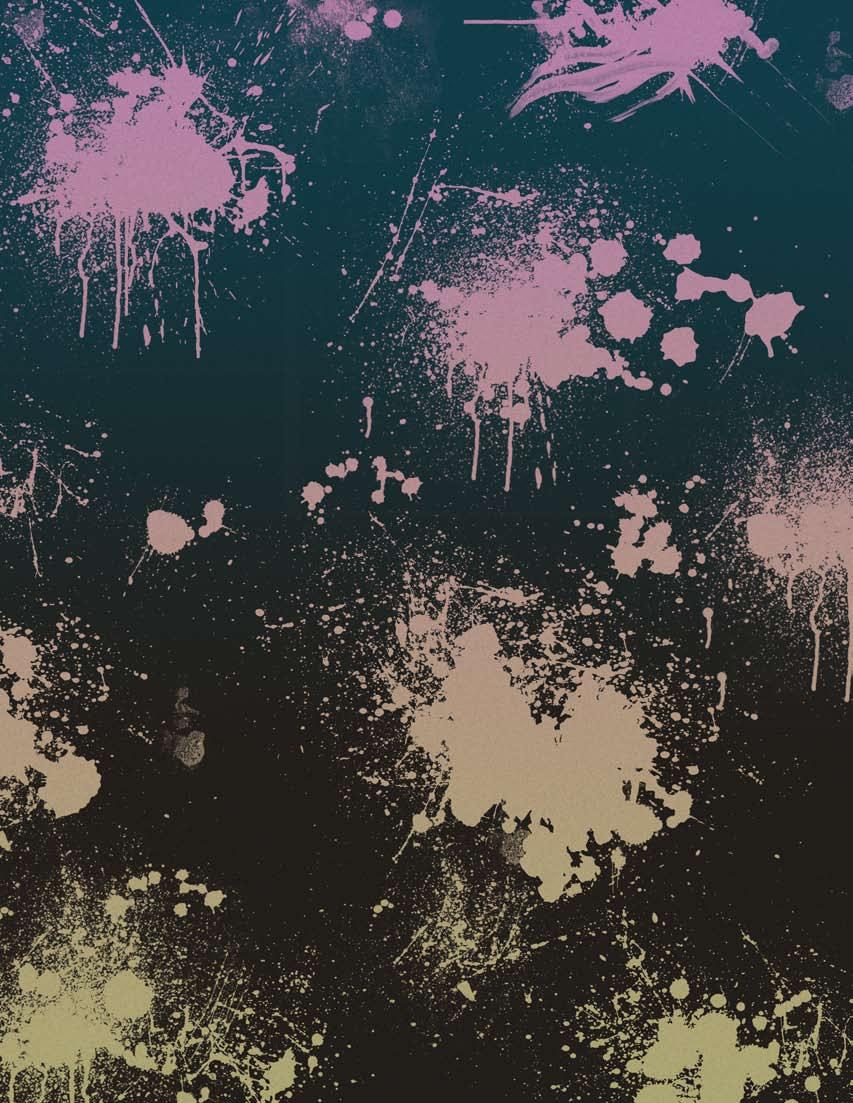
Brookland.
Even though Headliners is a larger venue, the sound quality is horrible. Even with a larger stage and space, there’s always too much guitar which overpowers the rest of the band or artists. Since the area is larger than New Brookland’s, sound carries, also creating a not-so-pleasant sound at times. Feedback is also another downfall to the overall sound quality of Headliners; although essentially inevitable, feedback has been more frequent at the shows I have attended at there.
Parking in the Vista in general is horrible, let alone in an attempt to get to Headliners. With the medians sporadically placed and a lack
of turning lanes, one has trouble safely and quickly turning into the Headliners parking lot. Headliners is located on Gervais Street right next to Tsunami, also leaving a lack of parking in the designated parking lot. The larger venue comes equipped with a bar (for those of age), a large standing area and an area where merchandise is sold.
Headliners specializes only in music, something that’s evident when one looks at their calendar. They also share the other half of their venue with Tabu, which limits their ability to expand their services and clientele.
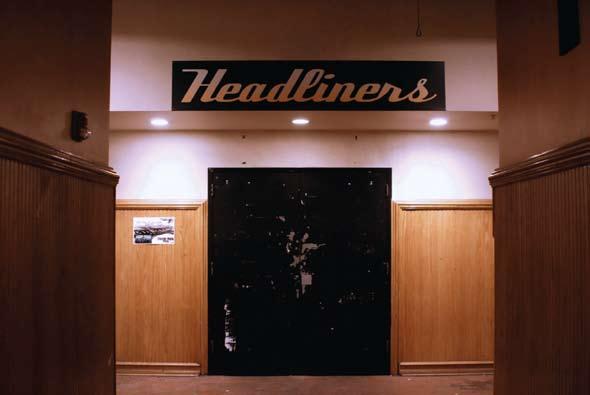
If you’re interested in the local music scene around Columbia, New Brookland Tavern (NBT) should be one of the first places that come to mind for great shows, affordable entry, and new music. New Brookland Tavern strives to respect the local music scene, and balances Columbiaarea acts with talent from across the country.
The sound quality isn’t great, but it’s much better than at other venues. Although the stage is smaller, the vocals, bass, and overall sound are clearer in the musty atmosphere of New Brookland. With parking behind as well as in front of the venue, getting to New Brookland is much easier.

Although New Brookland is farther away from campus than Headliners, it offers a more intimate setting with the artists performing and the audience that attends. The venue itself is much smaller and older, and is equipped with a bar, pool table and a separate pit area with wall décor to provide a cozy (or not, depending on the artist) atmosphere. With a smaller stage in the pit area, the audience has the
ability to get right up in front of the stage. Close enough, even, to see the sweat drip from the vocalist’s face. And that’s wicked cool. Also, New Brookland does not simply serve as a stage for music; one can attend Service Industry Night, food drives and dance parties, as well as Halloween movies played once a week during the month of October. I don’t know
about the rest of USC students or Columbia residents, but I’m happier sitting in a booth listening to local music and being able to hear myself talk than having to stand for hours and scream to be heard by the person next to me. NBT is for me.
Intimate setting
Local music

Farther from campus
Better sound quality
Pool table and arcade machine
Bar (for those of age)
Large room to stand in Bar (for those of age)
Larger acts
Conveniently located in Vista
Too much guitar and feedback
Open space
By Lauren DolanThe breakup cannot seem sudden. The other person should at least see it coming. To prepare the person for the breakup, slowly stop making plans and hanging out with them. Make more time for your friends along with other commitments to fill up your time. Also, drop hints here and there that things might not be working out, or that you’re not happy with the relationship.
T
* DO IT IN PERSON! Nobody likes being dumped on the phone, over a text message or via the Internet. It isn’t courteous and it makes you look bad. Plus, it’s a lot easier to express your emotions and say what you want to say if you talk face-to-face. A lot of things said over text messages or online can be misconstrued.
* Make sure you do it at their place. This way, once it’s over you can make an exit. The person will also be less embarrassed this way, rather than if the breakup is done in a public place.
* Don’t use the line “It’s not you, it’s me.” No one buys it. Give them your real explanation for wanting to breakup. Be honest, but kind.
* Make the breakup final. Don’t leave room for the other person to negotiate.
* You can say you want to still be friends, but it can’t happen right away.
* When all is said and done, try to make as polite an exit as is possible.
* Give the other person their space for a few months to give them time to get over it. This includes staying away from their friends and family as well. You both need a new start.
* After a few months have passed, if you really want, you can slowly start texting the person again to try and build back your friendship. However, if you just want to be friends, do not give the person mixed signals. Make it clear that you are just looking for friendship.
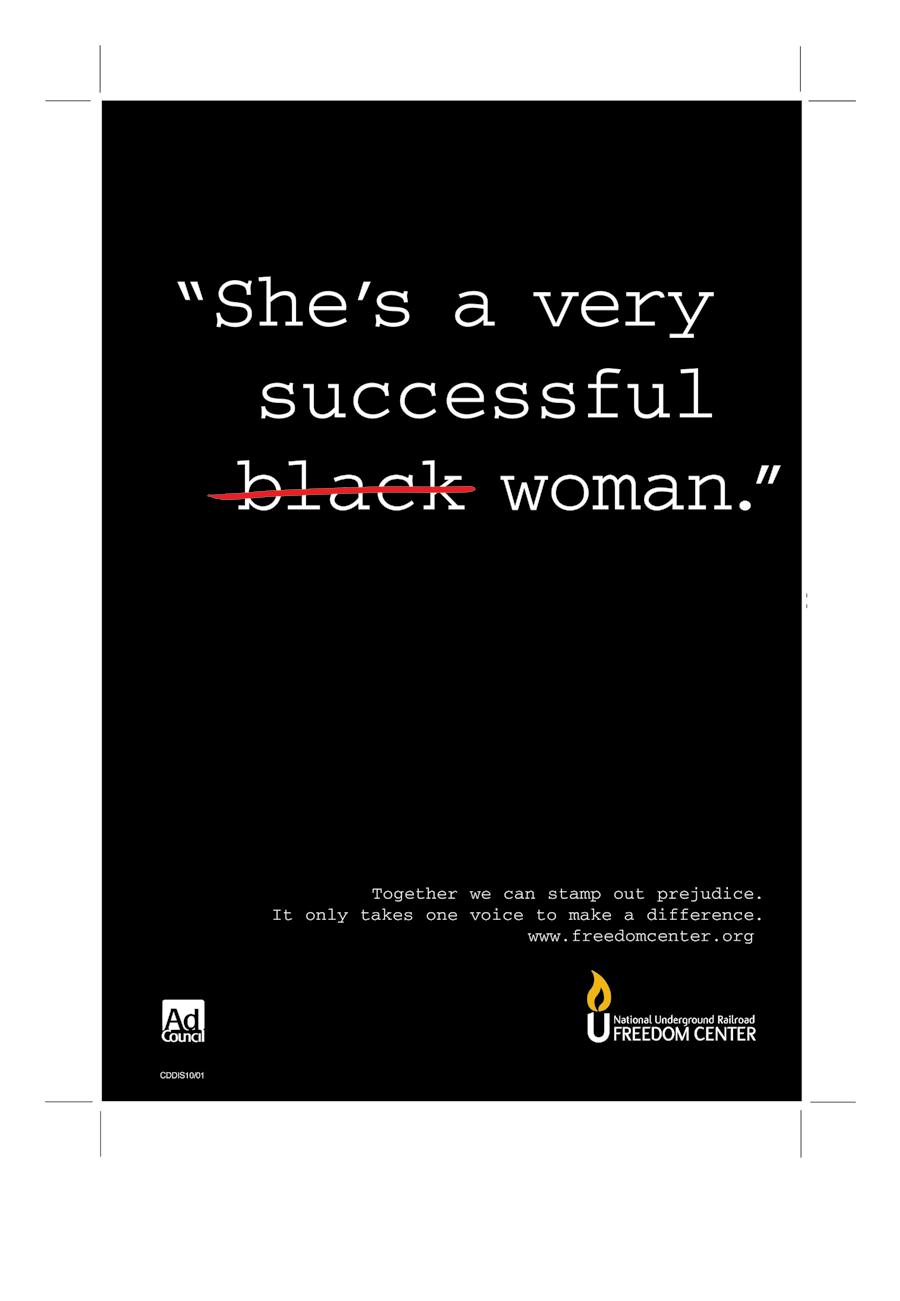
How did you get your latest American Apparel garment?
a) you stole it
b) you got it at a thrift store
c) you borrowed it from a friend
d) you actually bought it at American Apparel
Where are you most likely to be on a Thursday night?
a) Bidding farewell to Sparks brand energy drink at a house party
b) At The Whig
c) At the Five Points Starbucks
d) At home watching “The Office”
When was the last time you showered?
a) You honestly can’t remember
b) Within the month
c) It’s been a few days
d) You’ve totally showered twice today already
Which beer do you drink most often?
a) Pabst Blue Ribbon
b) Newcastle
c) Yuengling Black and Tan
d) Stella Artois
Your glasses:
a) used to belong to someone else and don’t have any lenses in them
b) have lenses, but aren’t ophthalmic in any other way
c) are vintage-inspired and correct your nearsightedness
d) have a high-end designer’s name running down the stem
If you answered:
Mostly A’s — you’re definitely a hipster, although you would certainly never refer to yourself as one in conversation
Mostly B’s — you really want to be a hipster, but you just aren’t gritty enough for it yet. Start a band and keep on trying
Mostly C’s — being a hipster is probably just something you’re trying on. Don’t worry, though; there’ll be another trendy lifestyle movement for you to cosign next week
Mostly D’s — you didn’t know what a hipster was until you started taking this quiz, did you?



Novelist, poet, musician, director, actor, producer and professor are all on Kwame Dawes’s list of accomplishments. Born in Ghana and raised in Jamaica, Professor Dawes has been greatly influenced by the rhythms and lyrics of reggae music as well as the beautiful Caribbean landscape. When he is not giving presentations and sharing his knowledge with universities across the U.S., he is a professor, the executive director of the South Carolina Poetry Initiative and the director of the USC’s Arts Institute.
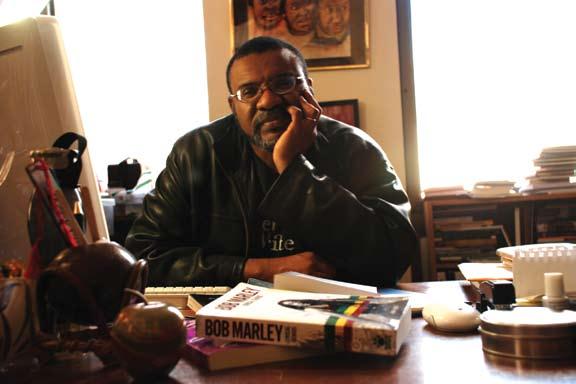
G&B: I read on your Web site that you grew up in Jamaica, and that it has been key in most of your publications. What is it about your culture that has influenced you and what do you want to share about it through writing?
KD: “I think most of us write about places we know. In many ways the music and the landscape have influenced me as well as the challenge of writing that landscape [in its absence]. The music of Jamaica, like reggae and so on, was blossoming at the time I was growing up there. Jamaicans have a presence in the world ... While I was there I felt outside of Jamaica. I’ve always had that condition of being in a place and yet having the capacity of feeling outside of that place.”
G&B: On reggae music, you have written a lot about Bob Marley. What is the main aspect of him that you want your readers to take away?
KD: Listening to Bob Marley is almost a kind of rite of passage of every young person experiences to get into the reggae phase. I think it’s cultural and musical and rebellious in some ways: they encounter this music that they feel is radical. It’s complex and mysterious. I don’t think they quite under-
stand it, but there is a kind of connection to it because it’s sensual and spiritual as well. So I wrote a book to help people understand that Bob Marley isn’t just a quirky or hippie guy who didn’t know what he was doing, but to show there is a tremendous poetic intelligence in his lyrics. He did not come out of a vacuum, but he came out of a context that was shaped by an apprenticeship in the music industry, where he was influenced by music from all over the world that would shape his art. I’ve also taught courses on reggae music and Bob Marley here at USC.
G&B: Being a writer, a performer and an artist, what made you want to add professor to your list?
KD: The truth is I’ve always wanted to teach, and initially I wanted to teach high school, and I did when I was an undergraduate and graduate student. I love teaching. That is at the core of what I do and who I am and what I’m passionate about. I hate marking papers, but other than that it’s great.
G&B: What is one thing you want your students to take away from your classes at the end of the semester?
KD: I want them to ask questions and have
a critical sense of engagement with the world. I think literature offers you those opportunities, to ask questions about the world and the perceived knowledge that comes to us and then make our own conclusions about it. I think art is a wonderful mechanism to do that because it forces us to connect with a part of humanity through empathy, but it also asks us to question what we see and then to come up with some kind of answers. So I want to generate in them a passion for reading writers’ works and art and to develop a critical sense of knowledge.
G&B: On our Web site, you have the quote, “All memory is fiction.” What does that mean to you?
KD: I’m still trying to figure that out, and I think before I die, I will know exactly what it means. I like the phrase — it’s my phrase and I think it will grow with me. I think it means memory is constructed. It is not something you take and reproduce in your writing. By constructing it, we take ownership of it and reshape it and make it incredibly present, and it becomes a fiction, not as in fictitious, but fiction in a series of narratives that move in a certain direction.
I love teaching. That is at the core of what I do and who I am and what I’m passionate about.
”By Yujing Zhao Illustration by Aidan Zanders
Living with indigenous tribes in remote villages represents a popular image of anthropology, but this is by no means the full extent of a field that is too often defined simply as the “study of man.” In reality, the anthropology major contains a broad range of subjects applicable to various careers. Of course, studying primate history or foreign cultures in far-flung locales is among the most famous examples of anthropological work. Just about every student has heard of such prominent figures in the field as Louis and Mary Leakey, Jane Goodall or Margaret Mead.
Anthropology today, however, is increasingly defined as a “four-field” approach, made up of archaeology, biology, culture and linguistics.
“The subject covers a very broad range,” says Professor Ken Kelley, undergraduate director of USC’s Department of Anthropology. “You can study everything from African agriculture through archaeological excavations to birth practices in the U.S., which is a part of medical anthropology.”

Anthropology is so diverse and interdisciplinary because, at its core, anthropology examines how people interact with others. For this reason, anthropological knowledge is also needed and applied in environments outside of academics, such as business, government and the military.
“Anthropologists play an important role in shaping public policy on issues from healthcare to immigration to human rights,” says Kelly.
Although entering academics is a natural option for many anthropology majors, it is far from being the only post-graduation route. Because of globalization, a degree or background in anthropology is more valuable than ever before. In to-
day’s job markets, graduating anthropology majors can find job opportunities ranging from company consultants to Peace Corps volunteers to academics. For graduates who attain a master’s degree in anthropology, cultural resources management (CRM) may be an ideal occupation. CRM professionals oversee and preserve cultural entities such as museums, theaters and even languages. While many job opportunities do not specifically request an anthropology education, they nevertheless demand skills that anthropology majors possess: the ability to carry out research, synthesize large amounts of information, analyze complex problems and more.
Sophomore anthropology major Will Saitta is an example of the subject’s broad reach and flexible career paths. “My concentration is in archaeology,” he says, “but I also would look into using a background in anthropology, especially cultural anthropology, and maybe do some international relations such as foreign service.”
The USC Department of Anthropology teaches and conducts research in all areas of the “four-field” approach. Among other events, the department is hosting a conference this month about the African diaspora, which will feature internationally renowned scholars. And many of the professors attended a meeting of the American Anthropological Association, which gave USC’s Professor Karl Heider a Lifetime Achievement Award.
“I like how the department has diverse enough courses that we can really concentrate on any of the four subfields,” Saitta says. “Most of the professors are doing research in addition to teaching, so during class they incorporate their research and it helps us see the field in practice.”
is a graduate student in the school of political science, and is also the Photo Editor of The Daily Gamecock. He’s been taking photos since 2000, but has been selling his work since 2003. He took this photo of the National Cathedral in Washington, D.C. while he was in law school
at The George Washington University. It was taken with a wide-angle lens on a Minolta Maxxum 5, a 35-millimeter SLR. It is entirely un-retouched, scanned directly from the film using a Kodak DiMage photonegative scanner. You can see more of his photography at neotericstudios.com.

The garnet&black wants your photos! Submit one to our Final Frame photo contest, and it just might get published in our next issue. Simply email your edited pics to sagandbp@mailbox.sc.edu.
Photo submission deadline is March 1st at 5 pm.

